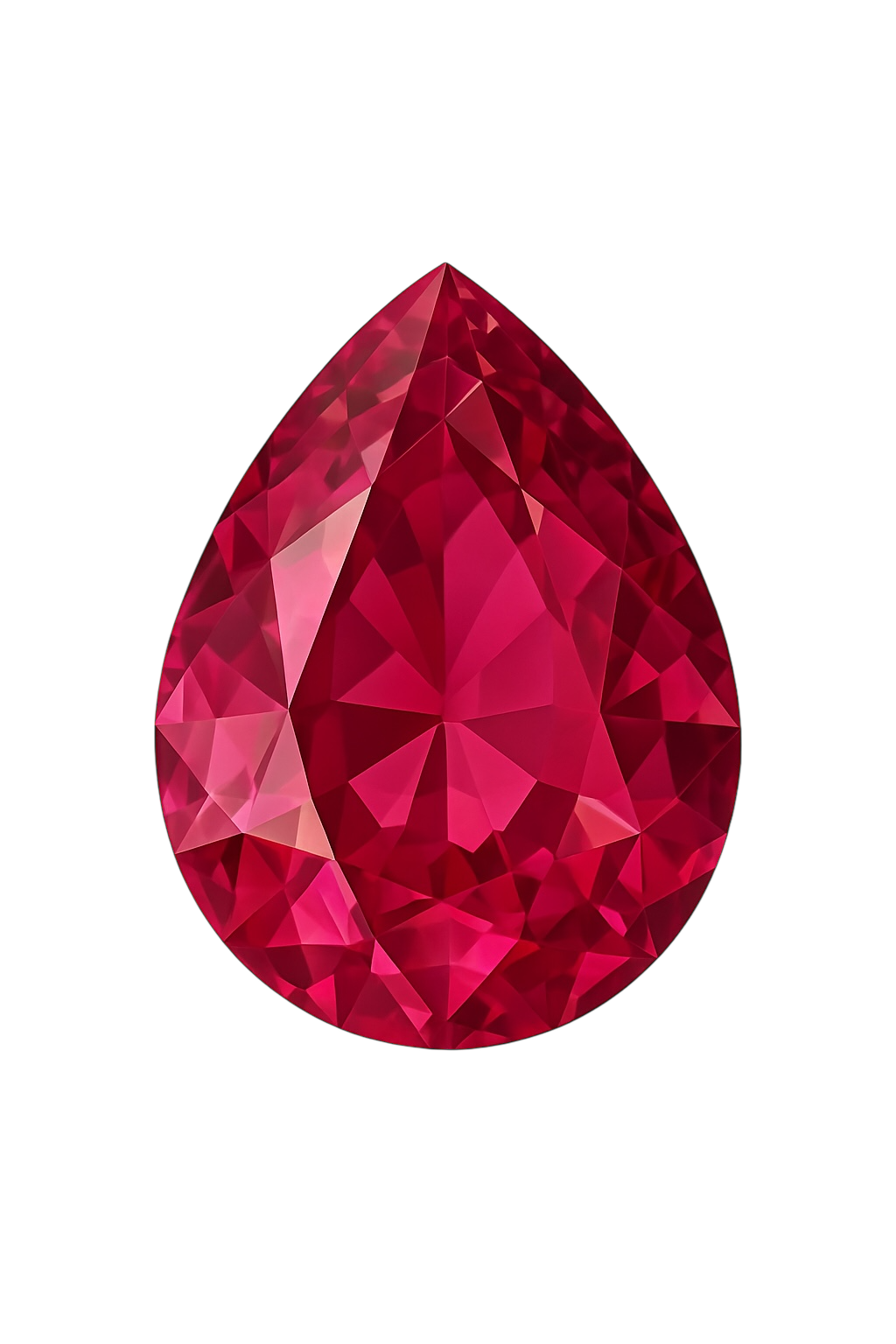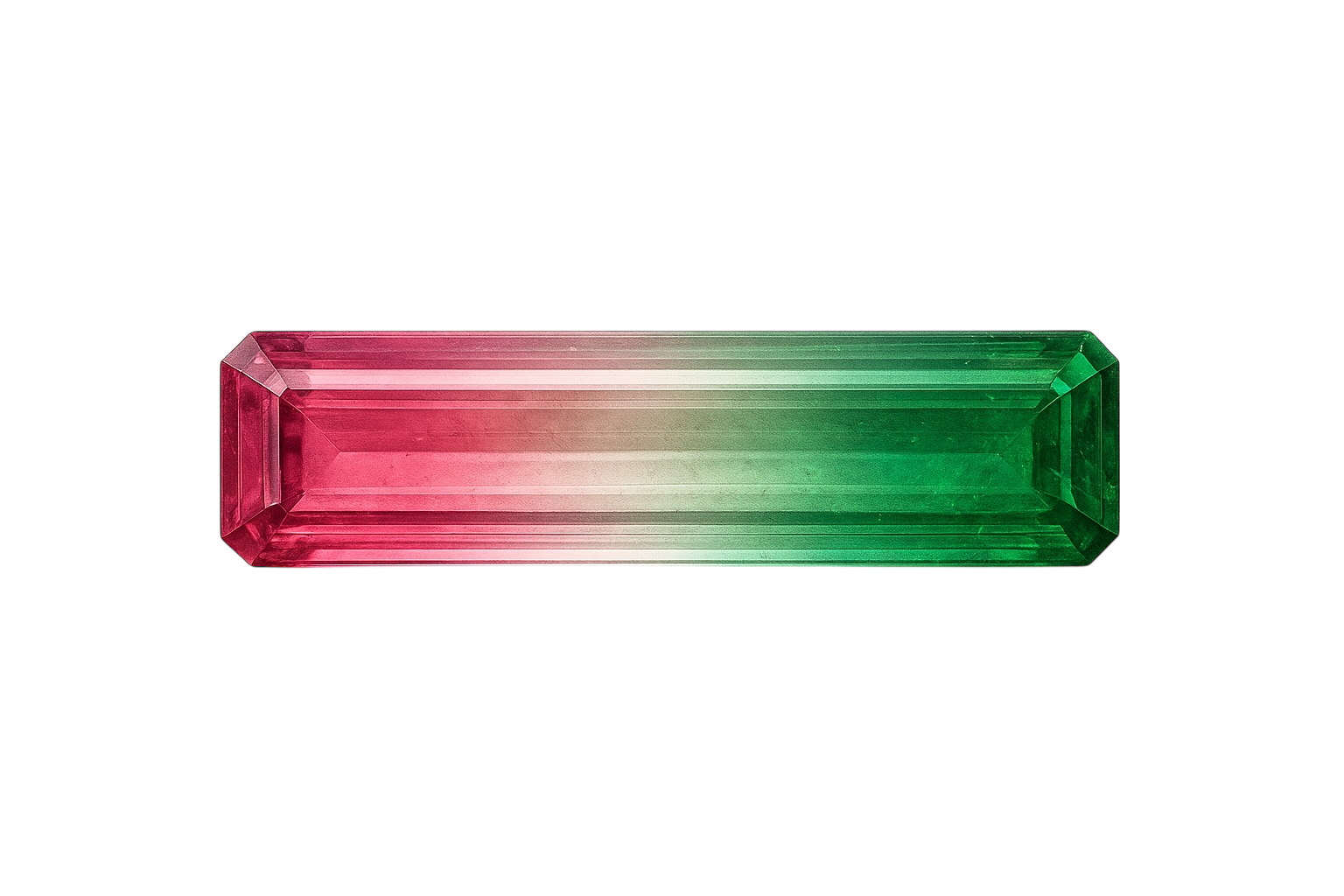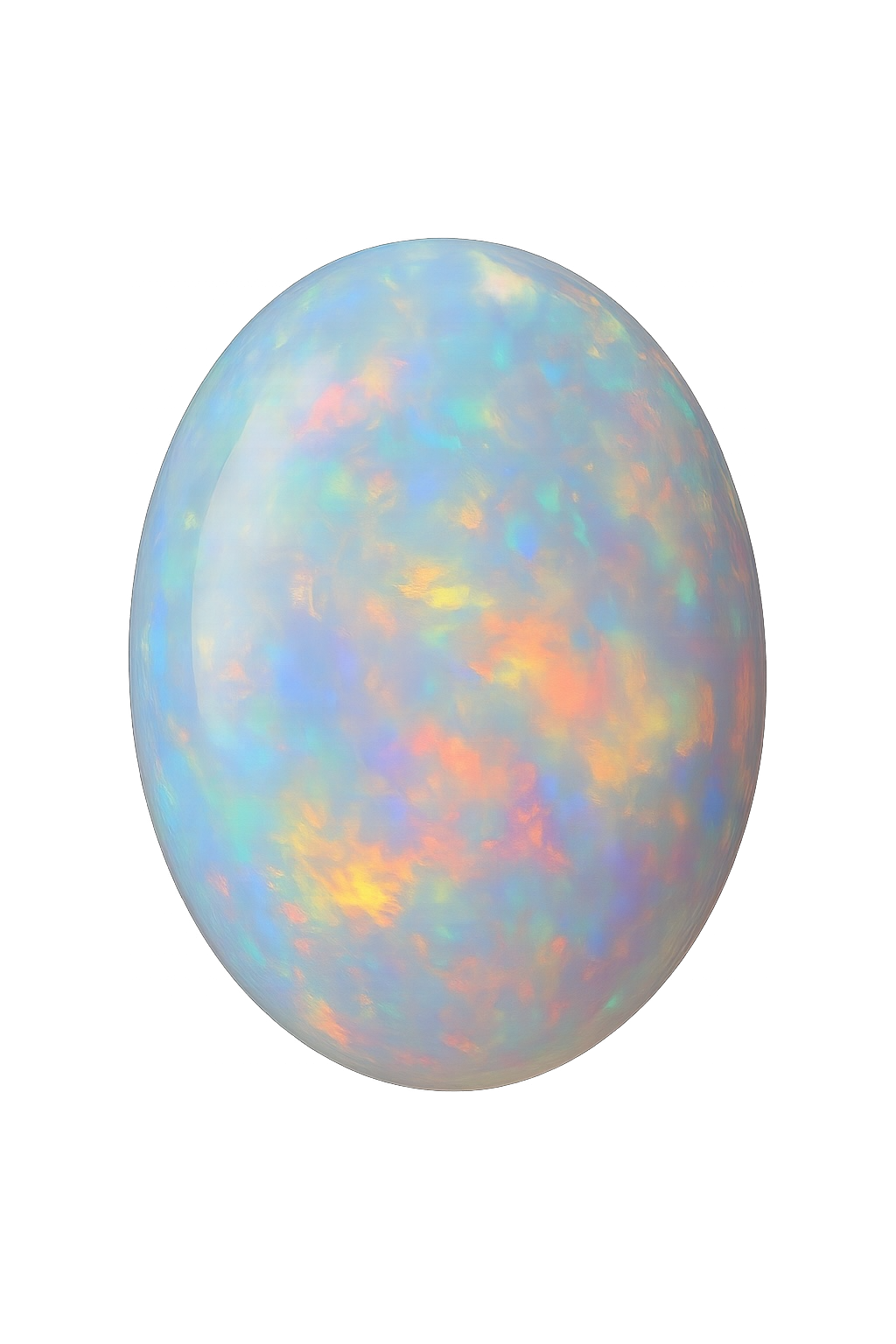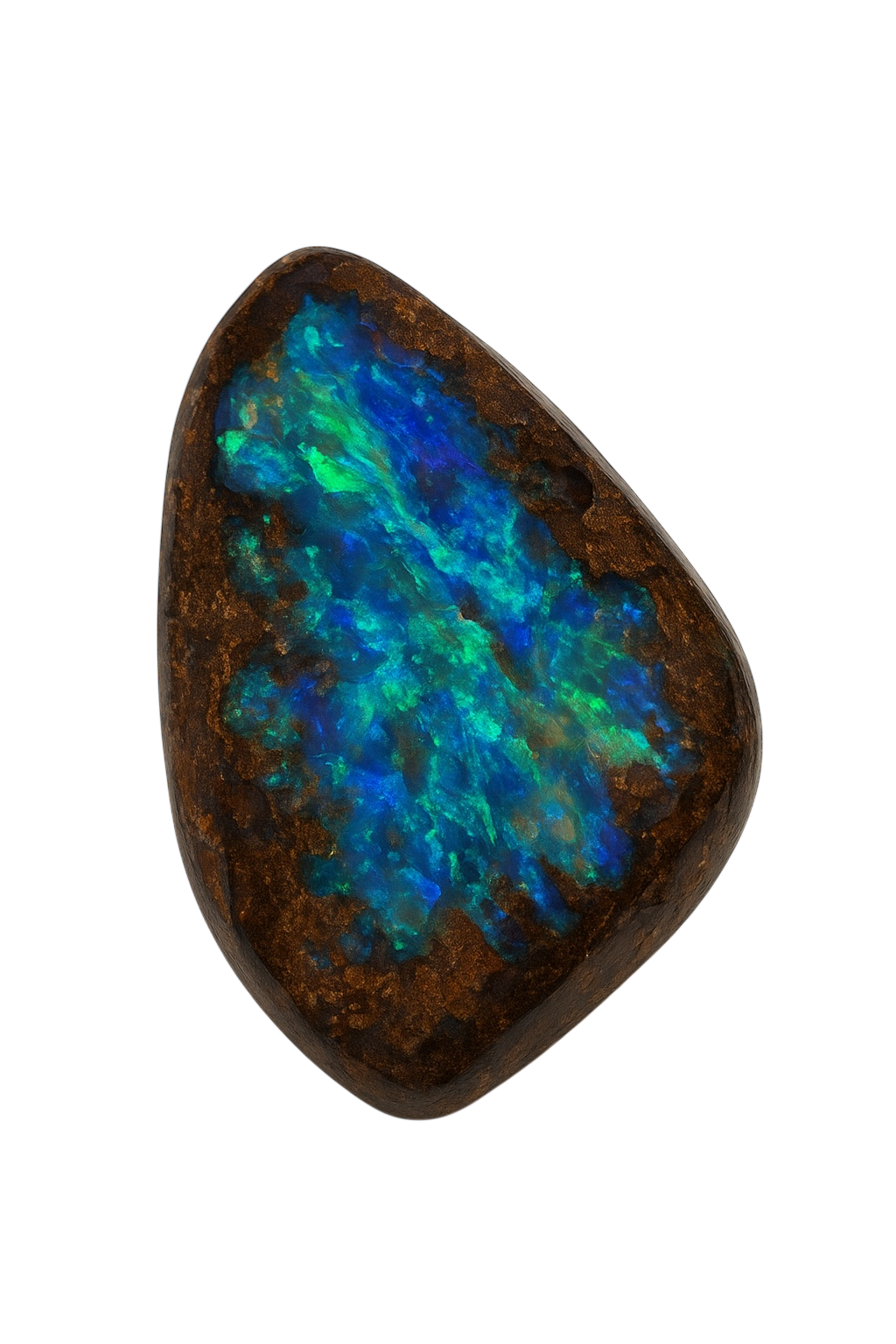
Tourmaline
Color: Tourmaline appears in a wide range of colors, including green, blue, pink, red, yellow, brown, and sometimes nearly colorless. The color comes from traces of elements such as iron, manganese, lithium, or chromium. Some stones display multiple colors within one crystal, like bicolor or watermelon tourmaline.
Hardness: 7 to 7.5 on the scale of Mohs. Tourmaline is relatively hard and suitable for jewelry worn daily, though it can still fracture if subjected to strong impacts.
Location: Important sources include Brazil, Africa (Madagascar, Nigeria, Mozambique, Tanzania), Afghanistan, Pakistan, Sri Lanka, the United States, and Russia.
Types and Characteristics:
-
Achroite: Colorless or nearly colorless tourmaline; very rare.
-
Dravite: Dark brown to yellow-brown tourmaline; often from Austria or Africa.
-
Indigolite: Blue tourmaline, ranging from light blue to deep indigo.
-
Paraíba tourmaline: Rare variety with intense neon blue or turquoise tones due to copper inclusions; highly valuable.
-
Rubellite: Red to pink tourmaline.
-
Schörl: Black tourmaline; opaque with a glassy luster, popular in rough form.
-
Siberite: Purple to violet-red tourmaline; named after Siberia where it was first discovered.
-
Verdelite: Green tourmaline; from soft green to dark green.
-
Watermelon tourmaline: Multicolored stone with a pink center and green edge; unique and highly desired by collectors.
Inclusions: Tourmaline often contains natural inclusions typical for this gemstone. Many specimens show straight or parallel growth lines, which can appear as fine streaks or channel like structures. Some stones exhibit a cat’s eye effect when cut as cabochon. Fully inclusion free tourmaline is rare.
Value: The value of tourmaline is determined by color, clarity, size, and rarity. Bright, vivid colors without visible inclusions are the most valuable. The rarest and most expensive tourmalines are Paraíba and Watermelon tourmaline.


Opal
Color: Opal comes in a wide range of colors, from milky white, yellow, orange, and red to blue, green, and black. The most recognizable aspect of opal is its play-of-color, an iridescent effect where colors shift depending on the angle of light. This phenomenon is caused by microscopic spheres of silica that diffract and scatter light.
Hardness: 5.5 to 6.5 on the scale of Mohs. Opal is relatively soft and vulnerable to scratches and dehydration. It is usually set in protective jewelry designs to prevent damage.
Location: Major sources include Australia (particularly Lightning Ridge, Coober Pedy, and Andamooka), Ethiopia, Mexico, Brazil, the United States, and Honduras. Australia is known as the leading producer of high quality precious opal.
Types and Characteristics:
-
White opal: Milky or light colored base with subtle to intense play-of-color.
-
Black opal: Dark base with bright play-of-color; rare and highly valuable.
-
Boulder opal: Found within its host rock, often displaying unique patterns.
-
Fire opal: Orange to reddish in color, typically transparent to translucent; often shows little or no play-of-color.
-
Common opal: Lacks play-of-color; can be white, gray, or brown.
Value: The value of opal is determined by the intensity and pattern of its play-of-color, base tone, brightness, and size. Black opals and stones with intense, strong color play are the most valuable, while white and common opals are generally more affordable.

